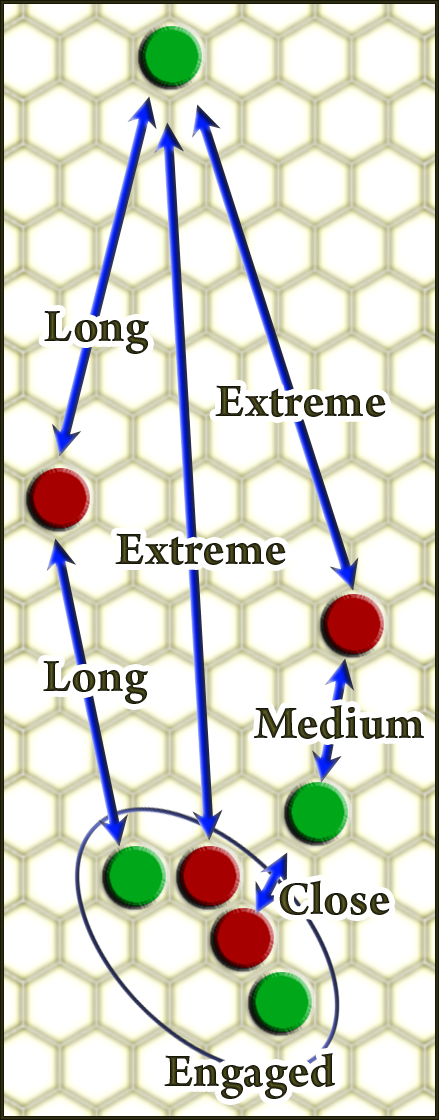I played a hell of a lot of the Guild Wars 2 beta over the weekend. In a sea of slightly different choices from the vanilla MMO, one of the things that stood out was Signet Skills. The way the game is designed, like in GW1, you have a lot more character abilities than you have ability slots, so you actually have to choose which abilities to take into a fight (unlike the standard MMO where your major choice is just where you’re going to fit all your powers on your skill bar). Most skills are similar to normal MMO skills: trigger the power to produce an effect, and then it goes on cooldown. When you slot a Signet Skill, however, you get a persistent minor buff until you trigger the skill for a bigger effect. Then, while it’s on cooldown, you don’t have the buff. Presumably, the triggered effect is less impressive or has a longer cooldown than comparable non-Signet Skills, in tradeoff for the buff when it’s not in use.
I love these things. With normal powers, around about 20 seconds of cooldown, and getting worse as the cooldown gets longer, I start having decision paralysis about when to use the power. I never want to use it, because then it won’t be available when I actually need it. Of course, since I always save it for emergencies, I don’t get in the habit of using it, so I paradoxically forget to use it in an emergency. And I’m even worse when it comes to potions. In general, I’ll go for the persistent effect if it’s a choice over a triggered effect, just to make sure I’m getting value out of the power. The Signet Skills allow me to have my cake and eat it too.
In general, this could be a cool thing to borrow for tabletop games, particularly high-granularity games like D20 that can make a reasonable tradeoff between small buff and big surge effect. For example, Fast Healing 1 is kind of a joke in combat (even though it breaks hit point attrition out of combat if it’s persistent). What if monsters with Fast Healing 1 could take a free action to heal 5 all at once, and then disable their healing for a minute? Would basic plussed weapons be exciting enough to make them competitive with Flame and Shock if you could expend the bonus on a successful hit to deal +6 damage per plus, but then it was just a minimally magic weapon for the rest of the combat?
Of course, the downside is that a computer is much better at tracking lots of small effects than a person is. The classic limitation of persistent effects is that they have to be calculated into a lot of other math, and they become headache-inducing when they go away or get added in the middle of a fight. Pathfinder has added a lot of these, such that several of the players in my current game get a lot of small, triggered bonuses. Every fight now has at least one long moment of trying to figure out if a bunch of small effects add up to a near hit or a near miss (“Okay, -2 for Rapid Shot, but +1 for Point Blank Shot, +2 for Justice, +2 for Bane…” or “+2 for Flanking, +2 for our Teamwork Flanking feat, +1 for Haste…”). It’s why 4th Edition moved a lot of effects to triggered, one-round big bonuses from smaller buffs (i.e., the “Nobody likes recalculating Strength on the fly” rule).
However, the benefit of a small, persistent bonus is that it’s far more predictable than a commensurate effect that essentially fires all persistent bonus at once. Take, for example, the classic gauntlets of ogre power. Let’s change them from a simple +2 Strength (and, thus, a +1 to all STR rolls including melee attack and damage ) to a +5 to a single STR-based roll or attack and damage for a single attack roll, usable as a free action once per four rounds (not five, because you’re already shafting the guy that gets multiple attacks per round). Over the long run, this is probably about the same as +1 all the time: the player’s average damage dealt looks similar. But in actual fact, the player can save the surge for targets that are hard to hit (a +1 may add up over time, but a +5 is for something you want dead right now). And, out of combat, that +5 is pretty much available all the time because, as noted earlier about Fast Healing, something that’s pretty limited in the micro-time inherent to combat can become way more powerful when you stop tracking rounds.
So I’m not altogether certain what my ultimate point here is, other than just rambling about an effect I found cool. To sum up, I guess:
- Small but persistent bonuses are annoying to calculate at the table, particularly if they come and go, but they’re unlikely to break the game balance until you start stacking a lot of them.
- Large but triggered bonuses are way easier to calculate, because they just apply once and then can be forgotten, but they can create unexpected game balance issues by allowing rolls to spike very high.
- It sure will be cool when computerized game assistants become competent enough to help track fiddly stuff at the table without a lot of messing around with your phone or laptop.
